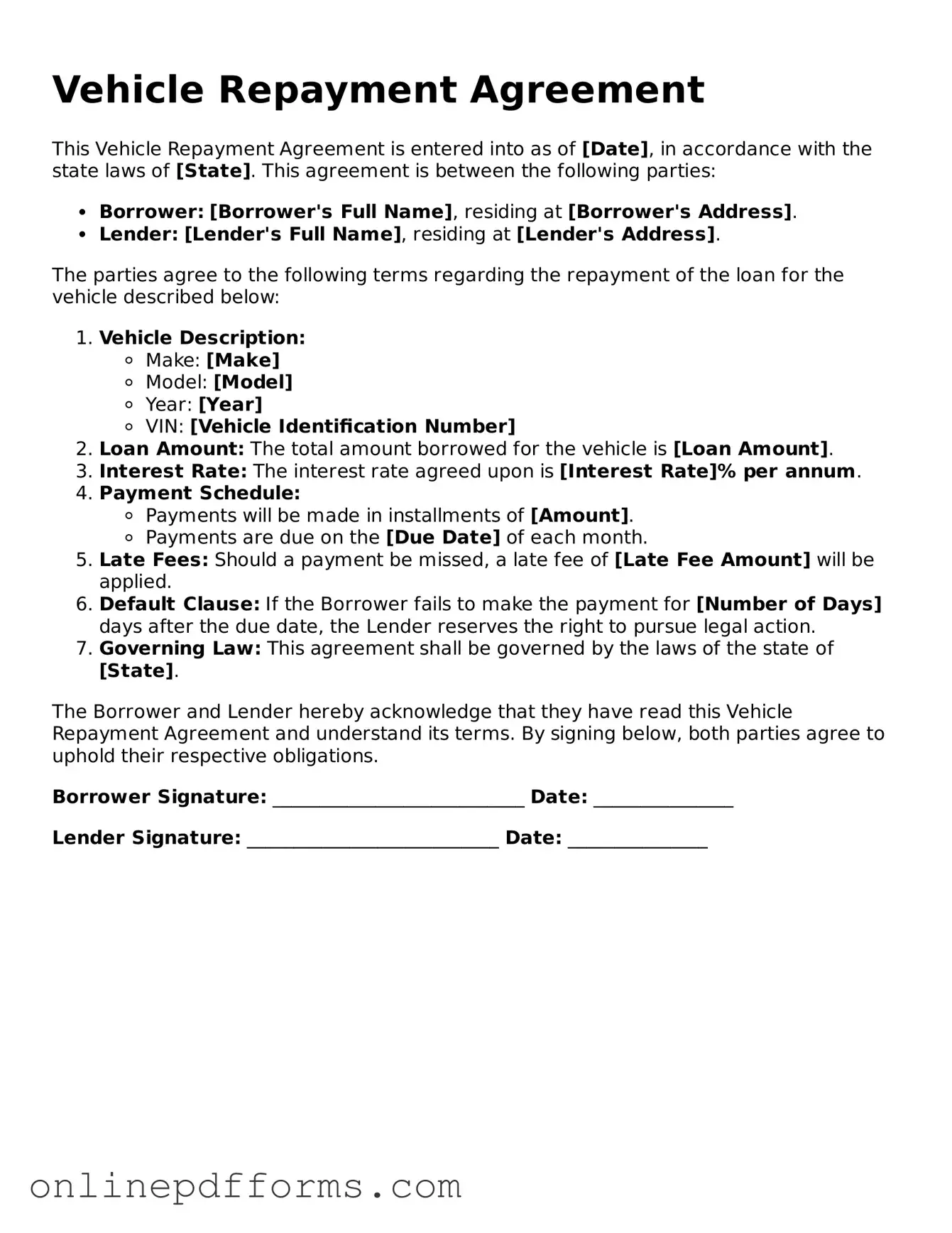The Vehicle Repayment Agreement form shares similarities with a Loan Agreement. Both documents outline the terms under which a borrower receives funds to purchase a vehicle. They detail the repayment schedule, interest rates, and consequences of default. A Loan Agreement often includes provisions for collateral, which in the case of a vehicle, is the vehicle itself. This ensures that the lender has a claim to the vehicle should the borrower fail to meet their repayment obligations.
Another document akin to the Vehicle Repayment Agreement is the Promissory Note. This is a legal document in which one party promises to pay a specified sum to another party under agreed-upon terms. Like the Vehicle Repayment Agreement, it includes details such as the amount borrowed, interest rate, and payment schedule. However, the Promissory Note is typically less detailed regarding the consequences of non-payment, focusing primarily on the borrower's commitment to repay the loan.
A Lease Agreement is also comparable, particularly when the vehicle is being leased rather than purchased. Both documents outline payment terms and responsibilities. A Lease Agreement will specify the duration of the lease, monthly payments, and any fees for exceeding mileage or damages. While the Vehicle Repayment Agreement focuses on ownership transfer, a Lease Agreement emphasizes the temporary use of the vehicle.
The Bill of Sale is another relevant document, especially in the context of vehicle transactions. It serves as proof of the sale and includes details such as the purchase price, vehicle identification number, and buyer and seller information. While the Vehicle Repayment Agreement focuses on the repayment terms, the Bill of Sale confirms the transfer of ownership from the seller to the buyer.
For those interested in investments, understanding the essential details about the Investment Letter of Intent is crucial to navigating agreements effectively. This document helps outline the fundamental intentions behind investment proposals, serving as a foundation for future contracts.
Similar to the Vehicle Repayment Agreement is the Security Agreement. This document is often used when a loan is secured by collateral, such as a vehicle. It outlines the rights of the lender in relation to the collateral and specifies what happens if the borrower defaults. The Security Agreement provides additional protection for the lender, ensuring they can reclaim the vehicle if necessary.
Finally, the Credit Agreement also shares characteristics with the Vehicle Repayment Agreement. This document governs the terms of credit extended to a borrower. It includes details about the credit limit, interest rates, and repayment terms. While a Vehicle Repayment Agreement is specific to vehicle financing, a Credit Agreement can cover a broader range of borrowing scenarios, yet both aim to establish clear terms for repayment and obligations of the borrower.
